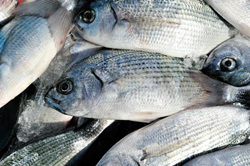Understanding TSE in fish
Transmissible spongiform encephalopathies (TSEs) have done serious damage to the reputation of the food industry in recent decades. The practice of feeding animal remains to livestock, which contributed to the spread of the disease, has since been revised. Fish farms, however, still use bone meal and other animal products as sources of protein for their stocks. The TSE and FISH project aimed to assess the risk of TSE transmission to fish from contaminated feed. The Institute of Agrobiotechnology of the Centre for Research and Technology Hellas (CERTH/INA) led a group of three other research institutes during the project. CERTH/INA examined the fate of PrPSc, the abnormal version of the prion protein thought to cause TSE, when ingested by fish. They discovered that the length of time the PrPSc is retained in the fish's systems depends on the species and the type of TSE. It was later confirmed that some of the harmful prions were able to cross the gastrointestinal barrier and infect other types of tissues. Thus, the fish can be compromised by unsafe feed supplies, casting serious doubt on the use of fish by-products as animal feed. Consequently, CERTH/INA and its partners recommend that these findings be given serious consideration prior to any lifting of the current ban on the use of fishmeal in the diet of livestock across the EU.







